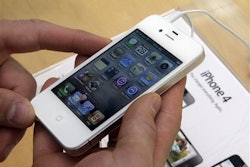AT&T recently announced plans to double the number of users who may participate in its free AT&T Enhanced Push-to-Talk (PTT) program. The program will allow users to have a limited preview of the company’s forthcoming solution.
“It’s not the traditional telephone service anymore. With this push-talk solution, it’s like other IP-based voice solutions,” says Igor Glubochansky, executive director of AT&T Mobile Marketing Solutions.
The solution is designed to merge the traditional benefits of PTT technology – specifically the ability to have instant group communication – with mobile’s compatibility with existing business systems and solutions. The future means being able to utilize useful business applications and push-to-talk service on the same device.
But what of the PTT solutions many industrial companies currently employ? Many manufacturers have an on-site private communication network for walkie-talkies, or they use legacy push-to-talk solutions provided by wireless carriers. However, in the future, companies will be able to use devices that are compatible with dispatch solutions, act as extensions for ERP and shop floor automation systems, as well as feature applications that assist and enhance work order management and small-group communication.
Furthermore, increased speed due to the development of LTE (long-term evolution) service will lead to widespread adoption and more applications, says Glubochansky. Examples include photo documentation, video documentation, GPS, barcode scanning, among others.
“Once somebody can understand how quickly a call can be set up, how easy it is to integrate with private networks in their business applications, their imagination will run wild,” said Glubochansky.
AT&T's goal is to provide customers with the type of communication service they need for instant group communications, backed by 4G technology and a broad portfolio of devices and business applications. AT&T offers a basic PTT service today, but expects to launch its Enhanced PTT solution in late 2012.
"Our customers call us and want answers now. The quickest way to find the answers is with PTT," said Steve Colkitt, IT Director at CourierNet. "What separates AT&T's service from other PTT technology is the speed and quality of the connection. We will invest whatever it takes in a solution that reaches the level of quality we experienced in the trial of AT&T Enhanced PTT."
In addition, AT&T also plans to offer a choice of as many as five compatible smartphones, including multiple devices from Samsung Telecommunications America, LLC (Samsung Mobile), when Enhanced PTT is expected to be available later this year.
“We’re seeing a lot of interest from customers just wanting to migrate,” he said. “That’s probably the biggest driver right now. Once people get into this new, modern voice communication we can open it up to all kinds of other apps.”























